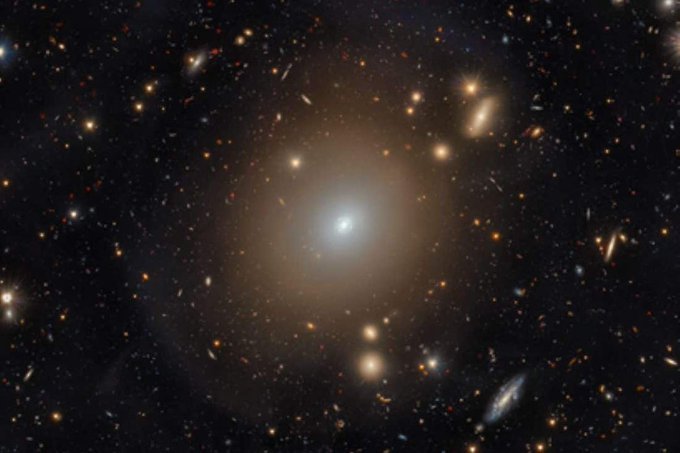A Rare Cosmic Phenomenon: Einstein’s Ring Dazzles Scientists
A spectacular event in space has been observed where light from a distant galaxy collides with a closer
galaxy known as NGC 6505, creating what is known as an “Einstein’s Ring.” Thanks to the gravitational
pull of NGC 6505, the light bends around it to form a complete circle in a rare cosmic alignment.
Perfectly complete Einstein’s Rings are observed only under exceptional conditions where two galaxies
and Earth align with pinpoint accuracy. The European Space Agency’s Euclid Space Telescope captured
a stunning image of this phenomenon, confirming Einstein’s 1915 prediction of how gravity can affect
the path of light.
Stephen Serjeant, an astronomy professor at the Open University and involved in the study, described
the discovery as “astounding! It looks so perfect it could be mistaken for a computer simulation. It’s
amazing that NGC 6505 has been known since 1884, but this stunning phenomenon was only observed
now, despite being right in front of us all along.”
Studying Einstein’s Rings helps unravel the mysteries of dark matter and dark energy, which constitute
95% of the universe, yet their nature remains largely unknown. This discovery suggests that a
significant portion of NGC 6505 is composed of dark matter, given that its gravity was strong enough to
bend light into a full circle.
The light forming the ring comes from a galaxy 4.42 billion light-years away, previously uncharted. When this light hit the nearer galaxy, NGC 6505, gravitational lensing magnified and circled it into a complete ring, allowing scientists to observe and study it.
It’s noteworthy that the Euclid Space Telescope began its mission to explore the dark universe on July 1,
2023. During its testing phase in September 2023, it captured the first image of this dazzling ring. After
further observations, it was confirmed as one of the most complete and luminous Einstein’s Rings ever
observed.
Bruno Altieri from the Euclid Archive team, who first noticed the ring, commented, “When I saw the
image for the first time, I immediately realized it was an astounding discovery. With further analysis, we
became certain we had observed one of the most beautiful and rarest Einstein’s Rings ever.”
The Euclid Telescope is expected to discover 100,000 strong gravitational lenses, enabling scientists to
create the largest three-dimensional map of the universe and understand how dark energy affects the
universe’s expansion, which is believed to be accelerating the expansion of space.
Source: Daily Mail
Trump’s Plan from Migration to Purchase: Is Gaza Becoming a Deal?




